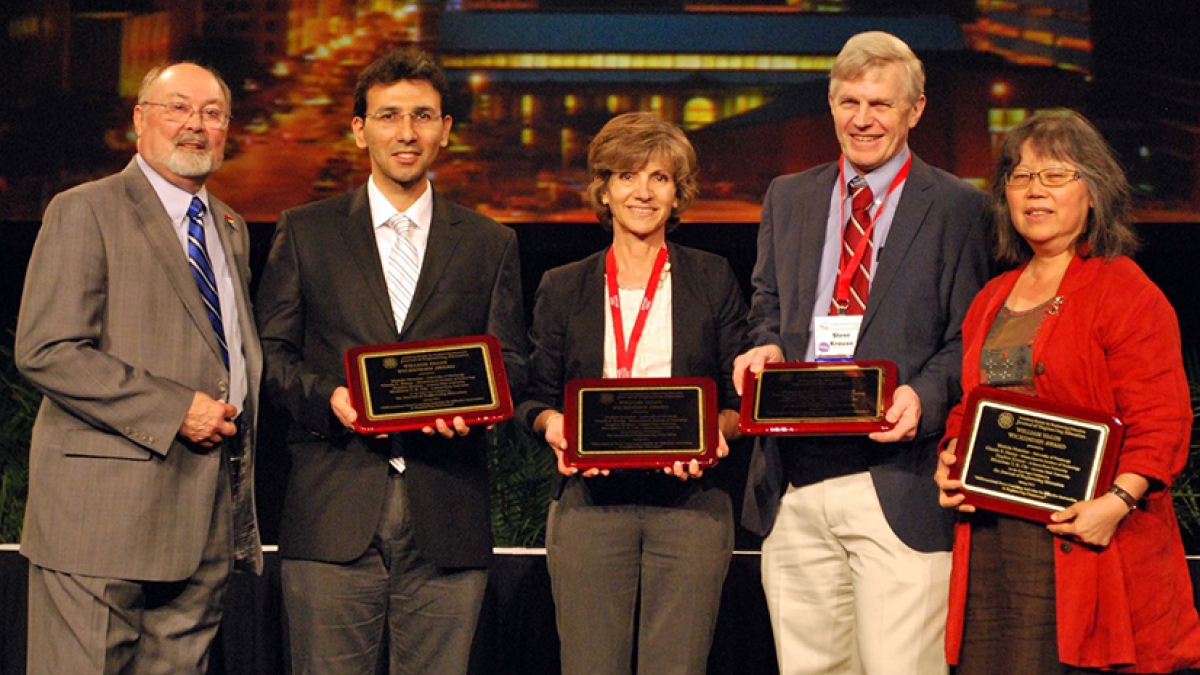Giving engineering teachers measure for success in classroom

An in-depth report on extensive studies to determine the most effective methods for classroom teaching of engineering won the award for best paper published last year in the Journal of Engineering Education for Arizona State University professors Stephen Krause and Michelene Chi, as well as two co-authors from other universities.
The American Society for Engineering Education (ASEE) gave its prestigious William Elgin Wickenden Award to the authors at its recent national conference and exposition.
“The Journal of Engineering Education is probably the leading archival journal in engineering education, and it is highly selective in choosing the articles it publishes,” Krause said. “So I am particularly proud to share this work with my colleagues. It speaks well for our collaboration across varied areas of expertise that we succeeded in being published and now have won this award.”
Krause teaches materials science and engineering in the School for Engineering of Matter, Transport and Energy, one of ASU’s Ira A. Fulton Schools of Engineering. Chi is director of ASU’s Learning Science Institute and a professor in the Mary Lou Fulton Teachers College.
The other authors are Muhsin Menekse, research scientist at the Learning Research and Development Center at the University of Pittsburgh, and Glenda Stump, associate director for education research at the Teaching & Learning Laboratory at the Massachusetts Institute of Technology.
Stump was previously at ASU as a teacher in the College of Nursing and Health Innovation, and a graduate teaching assistant and guest lecturer in the Mary Lou Fulton Teachers College.
For more than three years, the team explored a variety of teaching techniques to attempt to measure the effectiveness of each method for enabling students to acquire “deep conceptual knowledge” about particular subjects, Krause explained.
The studies focused on the teaching and learning of materials science and engineering concepts. The methods the researchers studied ranged from students’ interactive engagement with discussion and debate of the topical content to passive listening about similar topical content in lectures.
The differentiated types of student learning were classified as interactive, constructive, active and passive (ICAP). An interactive approach involves having two or more students engage in collaborative efforts designed to encourage them to address problems and challenges by building on each other’s ideas.
The constructive approach involves students by themselves interacting with a medium, such as a text or an interactive video, to construct new ideas or new approaches to solving open-ended problems to achieve solutions that extend beyond the conventional.
Active learning as defined in the article referred to students, by themselves, interacting in a simple, manipulative way with a medium, such as underlining text in a book, or playing and replaying a certain part of a tutorial video.
Passive learning involves individual students interacting with topical instruction in a receiving way, such as listening to a lecture, watching educational television or watching a tutorial video.
The team then tested students on their level of comprehension and retention of knowledge corresponding to the use of each of the different teaching approaches. Their results assessed the success of the teaching approaches compared to one another.
Student learning was most effective for the interactive approach and least effective for the passive approach. The results were explained in terms of Chi’s hypothesized theory of underlying cognitive processes that occur with each type of learning to account for the effectiveness of the different instructional methods.
The ASEE Wickenden Award is named in honor of William Elgin Wickenden, a leading engineering education expert and author of the influential Report of the Investigation of Engineering Education.
The winning research paper is titled “Differentiated Overt Learning Activities for Effective Instruction in Engineering Classrooms” in the Journal of Engineering Education, July 2013, Vol. 102, No. 3, pp. 346-374.
Online access to the paper is limited to ASEE members, but a copy can be requested from Krause at skrause@asu.edu.